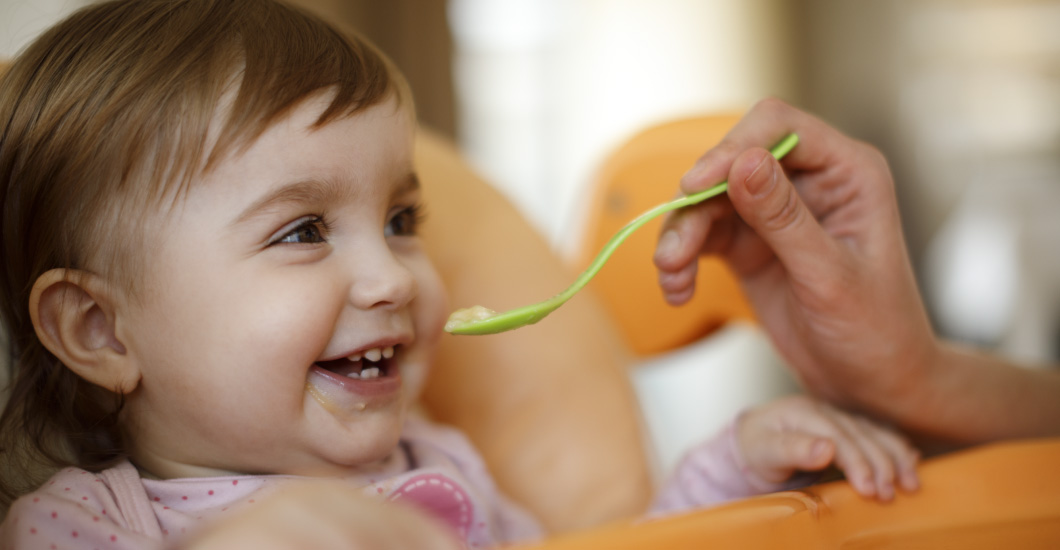Why breastfeeding is the best practice for me and my baby? Tips for enjoying breastfeeding
Tips for parents /

You might have heard breastfeeding has a lot of benefits for your baby. But did you know it is also good for you as a nursing mother?
The American Academy of Pediatrics recommends breastfeeding as the only source of nutrition for your baby for the first 6 months, though it can be continued for as long as both mother and baby desire it.
Breast milk is naturally designed to best meet the individual needs of babies. It provides all the necessary nutrients and it is easy to digest. Beyond the nutritional benefits, breast milk helps to build your baby's immune system because it contains antibodies that can fight infections. Those antibodies are present in high amounts in colostrum, the first milk that comes out of the breasts after birth.
Breastfeeding reduces the infant’s risk of developing diseases such as:
- Asthma.
- Obesity.
- Type 1 diabetes.
- Severe lower respiratory disease (bronquiolitis)
- Ear infections
- Sudden infant death syndrome (SIDS).
- Gastrointestinal infections (diarrhea/vomiting).
Breastfeeding is also very good for women. If you are a new mother, it will make you feel good because it produces prolactin, a hormone that creates a nurturing sensation that allows you to relax and focus. It also produces Oxytocin, another hormone that promotes a strong sense of love and attachment between you and your baby.
Breastfeeding also provides other health benefits, such as:
- Recovering from childbirth more quickly
- Reduced rates of breast and ovarian cancer later in life.
- Reduces the risk of developing type 2 diabetes, rheumatoid arthritis, high blood pressure and high cholesterol.
- And as a bonus, it has no extra cost!
Get ready to breastfeed!
- Prepare yourself from the moment of pregnancy
- Get prenatal care.
- Look for breastfeeding education.
- Talk to your doctor about your birth control options after delivery to get one that does not interfere with breastfeeding.
- Talk to friends who have breastfed, or consider joining a breastfeeding support group.
- The first contact with your baby matters
- Cuddle with your baby skin-to-skin right after giving birth, if you are both healthy.
- Breastfeed as soon as possible after giving birth.
- Try not to give your baby any pacifiers or artificial nipples until he or she is good at latching on to your breast.
- Taking care of your nipples
- There's nothing you need to do or know to prepare your nipples for breastfeeding: it is a natural process.
- Keep your nipples clean and dry. Use water to clean them.
- If your nipples are sore or cracked, briefly apply a cold pack to numb the injured nipple area before nursing. Clean your nipples gently with water. You can also apply expressed milk to your nipples.
- You can apply some over the counter cream, balm or gel, but it has to be cleared before breastfeeding.
- Consult with your doctor or nurse for help.
- Get Comfortable while nursing
- Lie your baby across your lap, facing you.
- Place your baby's head on your forearm – nose towards your nipple. Your hand should support the length of their body.
- Place your baby's lower arm under yours.
- Check to make sure your baby's ear, shoulder and hip are in a straight line.
- You may want a pillow on your lap to help support your baby.
- Always provide support for your back, you should feel secure and comfortable
- Recommendations for a good latch
- Position your baby so that her/his head and body are in a straight line. The baby should be facing you with his/her nose near your nipple.
- Position your nipple between your baby's upper lip and nose, then encourage him/her to open wide by gently tickling her upper lip with your nipple. Your baby will start rooting – looking for your breast with his/her mouth open.
- Pull her/him to your breast and aim your nipple toward the roof of his/her mouth
- Check your nipple position: The baby chin should touch your breast first and his/her upper lip should close around your breast, ensuring she/he gets a big mouthful of breast tissue, primarily the lower part of your areola and the breast beneath. You might still see a bit of your areola on top, and your nipple should end up far back inside your baby's mouth.
- Your baby's lips will open wide around your breast. You'll feel the baby’s tongue and mouth pull your breast into her/his mouth.
- When the baby is latched on well, you may hear her/him swallowing or see his/her jaw working as his/her tongue massages your lower breast.
- If the latch is painful or the baby is not latching, gently slide a clean finger into the side of your baby's mouth and between his/her gums. This will break the suction so that you can reposition your baby and try again.
- Make each feeding time a space to bond with your newborn!
Remember, if you are a nursing mother, you should take care of your health, eat a healthy and nutritious diet with calcium, iron, folic acid, vitamin D and proteins. Also, you should drink plenty of fluids.
Don't hesitate to ask for help
If you're having trouble breast-feeding or you are not feeling well, ask a lactation consultant or ask your primary care provider
Breastfeeding During the COVID-19 Pandemic
You can breastfeed if you have COVID-19 or are not fully vaccinated, as long as you take extra safety precautions to protect your baby.
- Wash your hands with soap and water before holding the baby and always wear a face mask while nursing.
- Continue taking these precautions until you are covid free
- Do not self-medicate. Always check with your doctor before taking any medication.
- Remember: The best way to protect your baby is to get the COVID-19 vaccine.
For more detailed information, visit the Centers for Disease Control and Prevention website about breastfeeding. If you feel you need help and advice for a better nursing practice, you can contact the Office on Women’s Health through the National Women's Health and Breastfeeding Helpline.


